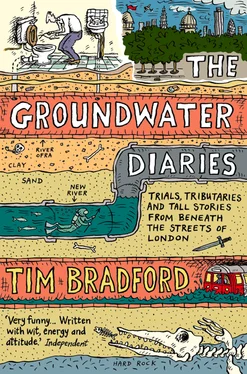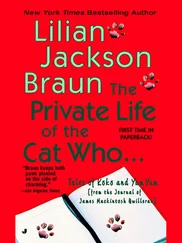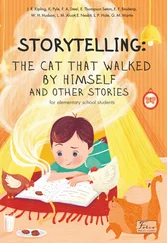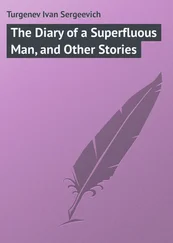And we used to make serious money on these meals. If the food cost, say, £1.50 the chef would invariably ask for 70p each, thus making a handy mark-up. This would go straight into a savings account. Occasionally when a woman came round we’d stick on an album of French accordion music that I’d found at a jumble sale and try and schmooze them with top grub. Strangely, late eighties women just didn’t appreciate fine food.
The house was split down the middle between English and Scottish tenants, but it was more complex than that. The split-personality fault lines of Walthamstow also meant that we were divided along organised (Saxon) and chaotic (Viking) lines.
I go round to Stevey’s flat to collect him for our walk of his river. He is still flapping a bit. He’s cleared out his valuable seventies football card collection, in case the place gets flooded, and gives it to me in a Tesco bag, asking that I donate it to the artefacts library of my erstwhile employers When Saturday Comes (independent football magazine). It is a bit of a John Paul Getty III gesture.
We walk up to the end of Blyth Road to Bridge Road and look at Stevey’s river, sorry, the Dagenham Brook, as it slowly snakes its way behind the little terraced houses. There are a few bits and bobs in the water – cans, bottles, old bikes. Soon, we turn into the Leyton relief road, which hasn’t yet opened because they haven’t finished building it. Concrete bollards bar access. A sign says that it’s due to open in Spring 2002. A Somalian guy is in the little Portakabin office, all fenced off. We tell him we are on a research project, hunting for the Dagenham Brook. Right, OK. He seems a bit too laidback and cool for a security guard.
‘Look,’ says Stevey, ‘Bywater on the skips. Are you noticing all these signs?’ Stevey is a bloody teacher knowall. In a minute he’s going to suggest we split up into smaller groups. We find the end of the river before it goes under the new Leyton relief road and under a light industrial estate to the River Lea. As we clamber into the undergrowth we suddenly come upon a group of very smiley people all pushing wheelbarrows. We’ve stumbled across some sort of gardening sect activity, which is alarming. I picture us being kidnapped and in a couple of days we’ll be pushing wheelbarrows too. What are they carrying in their wheelbarrows? We have no option but to press on. But the barrow people are following us.
I confront one of the leaders, who explains to me that he’s from the Environment Agency and these are volunteers helping to clear the lower reaches of the brook. He said they were planting stuff in and around the river, encouraging wildlife back. Kingfishers and that. I ask him about the route of the river. He says it disappears pretty soon after it crosses Lea Bridge Road. Stevey is jumpy, but manages not to ask about emergency flood procedures. As Stevey and I saunter past with our serious explorers’ expressions, the not-barrow-people-but-voluntary-workers who are sweating hard obviously guess that we are pros or environmental activists and start to say hello. The brook then disappears under Leyton Wingate football club. There is a game on, but it’s three quid to get in and we’re not that desperate to find the stream. And that’s the last we see of it, until it sluggishly flows behind houses then disappears somewhere to the north in the vicinity of Markhouse Road. We celebrate our victory by repairing to the Hare and Hounds where we have some god awful half-frozen-food and thin Guinness, surrounded by fat blokes.
In John Rocque’s 1746 map of Walthamstow there are several country houses with ornamental gardens and ponds. Dagenham Brook is called the Mill River and appears to be an artificial ditch, as Stevey had hoped. I’II go round to tell Stevey but I don’t think he wants to talk about it. He’s recently given me some more old bubblegum cards, this time of my beloved Leeds United, believing he can buy me off so I won’t keep going on about rivers and we can get back to How It Was Before – stories, politics, women and football. He’s underestimated me, because … bloody hell, between 1970 and 1974 Eddie Gray only played sixty games for Leeds. I think he might have been injured. I rub the back with a coin. Magic! A picture appears. Then it disappears again! Ooooh.
It’s now late March. I walk from my house to Brisbane Road stadium, which lies about 100 yards to the east of the Dagenham Brook’s southern section, to watch Leyton Orient play Blackpool in a Third Division game. On the way I get caught up in a torchlit procession by hundreds of Kurdish demonstrators, some playing medieval-sounding pipes, some banging drums. The rest are singing a Kurdish version of ‘All We Are Saying Is Give Peace A Chance’. At least that’s what it sounds like. A quarter of a mile further on someone lies dying at the side of the road, surrounded by a crowd of people, a victim of a hit-and-run driver. Blackpool win 2–1.
A few days later the USA pulls out of the Kyoto Protocol for climate control. Then Stevey P. phones me to say he is very worried about the river again. His bit is filled up with rubbish – old bikes, oil cans, car seats. Barely half a mile away, the Environment Agency are planting rare flowers and kissing kingfisher eggs. This is, he points out, the London of extremes. Dagenham Brook, once a river of mystery, is now one of contrasts – heaven and hell, London and Essex, Saxon and Viking, good and evil, kingfishers and used bicycles, something nice and jellied eels.
I needed sleep. I padded through to my study to get my well-thumbed copy of Albert Camus’s The Rebel. I’d been reading it for about five years. (My other insomnia beater is The Scarlet and the Black.) In seconds I was drifting off.
I went back to Walthamstow, bought some jellied eels and took then up to the William Morris Gallery. Didn’t feel anything. I then went back to the Lorne after eating the jellied eels to show some William Morris prints to the Beards and Len the Landlord, plus my eel illustration. It was closed up. Then I walked back up Lea Bridge Road towards the roundabout at Clapton and decided to find out if there really was a psychic border at the River Lea. At the pub there I ran from one end of the bridge to the other to see how I felt. Saxon or Viking? Saxon … run run run run run run run run run run run run run run run run run … Viking … run run run run run run run run run run run run run run run run run … Saxon … run run run run run run run run run run run run run run run run run … Viking … run run run run run run run run run run run run run run run run run … stop … gulp for air … dirty fumes … have coughing fit …
There was a rumour doing the rounds a while back that a bear had gone missing from a travelling circus in East London (maybe Zippo, maybe not). Eventually the authorities dragged the Lea in Hackney Marshes just south of here, near the Walthamstow pitch-and-putt course, and found the bodies of three bears, skinned. But not the one they were looking for, which turned up somewhere else.
To: The William Morris Society
Hi there
I’m researching a book about underground rivers and William Morris crops up a couple of times. I was wondering if you had any information on whether rivers influenced Morris’s work. I’m also interested in his time at Walthamstow – I’ve heard a story that he loved jellied eels! Have you ever heard this?
Hope you can help.
All the best,
Tim Bradford
Dear Tim
Thank you for your enquiry. Morris was influenced by rivers and nature in general. His designs incorporate natural forms, especially foliage and flowers. In 1881, Morris & Co moved to larger premises at Merton Abbey, where the River Wandle was a ready supply of water and could be used for dyeing the textiles. There is a fabric named after the river, called Wandle, and Morris also produced a number of designs based on tributaries of the Thames.
Читать дальше











